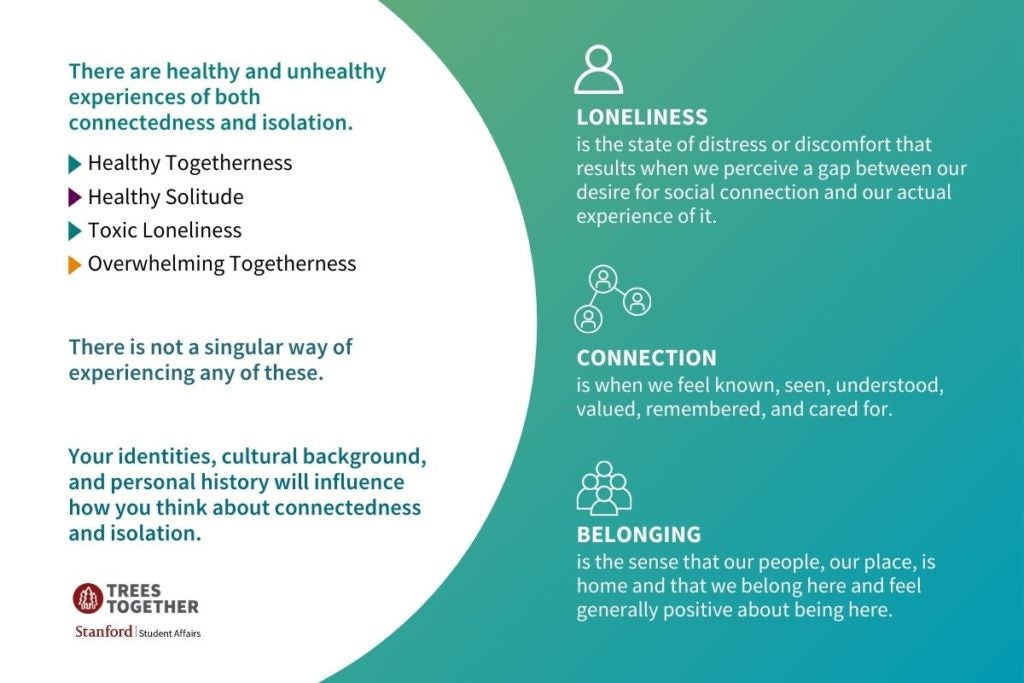New site offers help for feelings of loneliness and isolation
A new website created by Student Affairs staff members explores what it means to feel isolated versus connected, and offers resources for dealing with feelings of loneliness.

College is supposed to be a time for making friends and finding connections with new communities. Even in the best of times, this can be challenging – and the COVID-19 pandemic has made it much more difficult.
“It’s just a basic instinct to want to connect with families, people you care about, people in the community,” said Christine Wong Mineta, Associate Director of Communications for Student Health and Well-being in the Office of the Vice Provost for Student Affairs. Although human connection is essential to our well-being, the pandemic creates an “opposing force” by telling people to maintain distance from one another. “It’s been really tough, and we’ve been in a really difficult time.”
A new website, Loneliness & Connection, which was created by Student Affairs staff members, looks at the complex dynamics of loneliness and connection, and it offers resources to help students combat feelings of social isolation. The site grew out of efforts to help students stay connected during the pandemic, but it offers guidance for non-pandemic times as well.
Key messages
One of the key messages is that there are healthy and unhealthy versions of being alone and being with other people – and individuals can move from one of these to the other very quickly.
“Being alone doesn’t necessarily mean you feel isolation,” Mineta said. “And just because you’re around a bunch of people doesn’t necessarily mean you feel connected to them.”
The site explores both healthy and unhealthy solitude and togetherness. It offers resources to help students who are feeling lonely, including talking to a resident assistant or visiting Counseling and Psychological Services, recreation programs, or community centers.
“There’s no one way of experiencing this,” Mineta said. “You can experience isolation and connectedness at different times of the same day.” Background and personal history can also influence how an individual feels.
Healthy solitude
It’s valuable for students to see that solitude is not necessarily a bad thing, said Ellie Prince, Class of 2022, a mechanical engineering major who offered feedback on the site while serving as an executive fellow for the University’s COVID-19 response team. It’s also helpful to explain the difference between healthy solitude and chronic isolation.
“I think this is especially important right now, when sometimes all the faces you see are on a screen in Zoom tabs,” Prince said. “But I hope it’s valuable moving forward as well.”
For example, the site could come in handy this fall. New college students, who are often living on their own for the first time and having to make new friends, are especially likely to struggle.
“That sense of loneliness, connection, solitude and belonging – these all can happen and can be normal,” Mineta said. “It’s OK to feel this way, whether you seek solitude or whether you want to be around a lot of other people.”